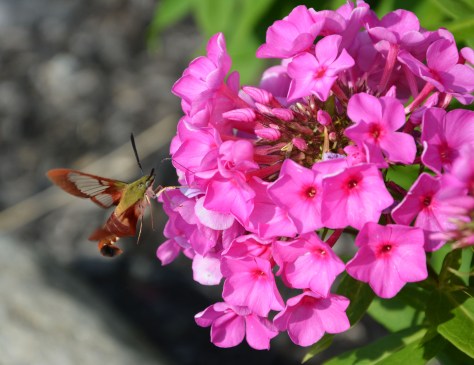It’s been rainy and cold for days now but there was work to be done out in the garden. Enough is enough. I’ve promised big things this year so every waking second is crucial. Even if it is was too wet to venture into the garden beds for fear of soil compaction, I could still take care of some important tasks.
One of the tasks was to start cleaning up the perennials I could easily reach and removing all of their dead foliage from seasons past. Here is some of what I accomplished:
PHLOX
We started with the pink Phlox that looked like this.

And it was heart warming to see that they will be back again in 2015

VERONICA
The numerous Veronica ‘Royal Candles’ were left as is for winter.

And each and every one of them fought of winter’s wrath and are ready to shine again.

MONARDA
I enjoy the winter interest of spent Monarda (Bee Balm) blooms.

And those tough as nails sons of bitches are back …

… and willingly spreading wherever they please, even under this Clethra shrub.

The pungent smell on my fingers after cutting the Monarda down have me longing for the early summer.

GERANIUM
Current state of Geranium ‘Espresso’.

And tiny proof that it is back for more.

And “more” looks like this beauty.

LADY’S MANTLE
The ratty looking Lady’s Mantle (Alchemilla Mollis) ..

… are now ready to strut their stuff.

… and light up those shady areas.

HEUCHERA
Good to see Heuchera ‘Blackout’ is rounding into form.

BUGBANE
Without a doubt, the perennial I am most excited to see perform this spring/summer is the Bugbane ‘Brunette’ (Cimicifuga). Two years in and I haven’t seen much but I am more than willing to remain patient for these beauties. I’m just psyched to see that it is back for a third spring and I’m convinced that the ladybug and earthworm below are signs of good luck.

Along with other endless tasks, I’ll continue to plug away at cleaning up the perennials out in the garden the next few days and hopefully we’ll see some true spring weather soon.
Thanks for stopping by.
John












































































